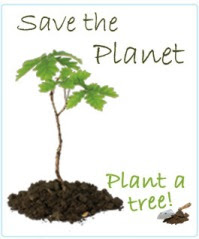தீபாவளி என்றால் என்ன?

புராணம் கூறுவது
1. ஒரு காலத்தில் ஒரு அசுரன் உலகத்தைப் பாயாகச் சுருட்டிக் கொண்டுபோய் கடலுக்குள் ஒளிந்து கொண்டான்.
2. தேவர்களின் முறையீட்டின்மீது மகாவிஷ்ணு பன்றி அவதாரம் (உரு) எடுத்துக் கடலுக்குள் புகுந்து அவனைக் கொன்று உலகத்தை மீட்டு வந்து விரித்தார்.
3. விரித்த உலகம் (பூமி) அப்பன்றியுடன் கலவி செய்ய ஆசைப்பட்டது.
4. ஆசைக்கு இணங்கி பன்றி (விஷ்ணு) பூமியுடன் கலவி செய்தது.
5. அதன் பயனாக பூமி கர்ப்பமுற்று நரகாசுரன் என்ற பிள்ளையையும் பெற்றது.
6. அந்தப் பிள்ளை தேவர்களை வருத்தினான்.
7. தேவர்களுக்காக விஷ்ணு நரகாசுரடனுடன் போர் துவங்கினார்.
8. விஷ்ணுவால் அவனைக் கொல்ல முடியவில்லை. விஷ்ணுவின் மனைவி நரகாசுரனுடன் போர்தொடுத்து அவனைக் கொன்றான்.
9. இதனால் தேவர்கள் மகிழ்ச்சி அடைந்தார்கள்.
10. இந்த மகிழ்ச்சி (நரகாசுரன் இறந்ததற்காக) நரகாசுரனின் இனத்தாரான திராவிட மக்கள் கொண்டாடவேண்டும்.
இதுதானே தீபாவளிப் பண்டிகையின் தத்துவம்!
இந்த 10 விஷயங்கள்தான் தமிழரை தீபாவளி கொண்டாடும்படி செய்கிறதே அல்லாமல், வேறு என்ன என்று யாருக்குத் தெரியும்? யாராவது சொன்னார்களா? இதை ஆராய்வோம். இக்கதை எழுதிய ஆரியர்களுக்குப் பூமிநூல்கூடத் தெரியவில்லை என்றுதானே கருத வேண்டியிருக்கிறது.
பூமி தட்டையா? உருண்டையா?
தட்டையாகவே இருந்தபோதிலும் ஒருவனால் அதைப் பாயாகச் சுருட்ட முடியுமா? எங்கு நின்றுகொண்டு சுருட்டுவது?
சுருட்டினால் தூக்கி கட்கத்திலோ, தலைமீதோ எடுத்துப் போக முடியுமா?
எங்கிருந்து தூக்குவது?
கடலில் ஒளிந்து கொள்வதாயின், கடல் அப்போது எதன்மீது இருந்திருக்கும்?
விஷ்ணு மலம் தின்னும் பன்றி உருவம் எடுக்கவேண்டிய அவசியம் என்ன?
அரக்கனைக் கொன்று பூமியை விரித்ததால், பூமிக்கு பன்றிமீது காதல் ஏற்படுவானேன்?
பூமி மனித உருவமா? மிருக உருவமா?
மனித உருவுக்கும், மிருக உருவுக்கும் கலவியில் மனிதப் பிள்ளை உண்டாகுமா?
பிறகு சண்டை ஏன்? கொல்லுவது ஏன்?
இதற்காக நாம் ஏன் மகிழ்ச்சி அடைய வேண்டும்?
இவைகளைக் கொஞ்சமாவது கொண்டாடும்- தமிழ்ப் புலவர்கள், அறிஞர்கள் சிந்திக்கவேண்டாமா? நரகாசுரன் ஊர் மாகிஷ்மகி என்ற நகரம். இது நர்மதை ஆற்றின் கரையில் இருக்கிறது. மற்றொரு ஊர் பிரகித்ஜோஷா என்று சொல்லப்படுகிறது. இது வங்காளத்தில் விசாம் மகாணத்து அருகில் இருக்கிறது. இதை திராவிட அரசர்களே ஆண்டு வந்திருக்கிறார்கள்.
வங்காளத்தில் தேவர்களும், அசுரர்களும் யாராக இருந்திருக்க முடியும்? இவைகள் ஒன்றையும் யோசிக்காமல் பார்ப்பனன் எழுதி வைத்தான் என்பதற்காகவும், சொல்கிறான் என்பதற்காகவும் நடுஜாமத்தில் எழுந்துகொண்டு குளிப்பதும், புதுத்துணி உடுத்துவதும், பட்டாசு சுடுவதும், அந்தப் பார்ப்பனர்கள் வந்து பார்த்து கங்கா ஸ்நானம் ஆயிற்றா? என்று கேட்பதும், நாம் ஆமாம் என்று சொல்லி கும்பிட்டுக் காசு கொடுப்பதும், அவன் காசை வாங்கி இடுப்பில் சொருகிக் கொண்டு போவதும் என்றால் இதை என்னவென்று சொல்வது?
சிந்தியுங்கள்! சிந்தியுங்கள்!!
பார்ப்பனர்களே உங்கள் ஆசிரியர்களுக்கு மானம், புத்தி இல்லாவிட்டாலும் நீங்களாவது சிந்தியுங்கள். எதற்காக இவ்வளவு சொல்லுகிறேன் என்றால், இக்கதை எழுதின காலத்தில் (ஆரியர்) பார்ப்பனர்கள் எவ்வளவு காட்டுமிராண்டிகளாக இருந்திருக்கவேண்டும். அந்தக் காலத்தில் நாம் மோசம் போனது ஈனநிலை அடைந்தது ஏன்? என்பதை தமிழன் ஒவ்வொருவரும் நன்கு சிந்திக்கவேண்டும் என்பதற்கு ஆகவேயாகும்.
--------------------'தந்தைபெரியார்' (15-10-2009 'விடுதலை'யில் வெளிவந்த கட்டுரை பக்க-2)
